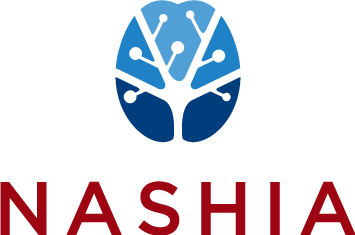Supporting A Trained Direct Care Workforce
The direct care workforce is a critical component of a well-functioning health system. These occupations are reliable entry points into the health sector, but limited wage potential as well as physical and emotional demands of the jobs contribute to high turnover and shortages. This article from the National Governor’s Association, Supporting A Trained Direct Care Workforce In Facility Settings During And After The Covid-19 Pandemic, discusses solutions.
Demystifying 508 Compliance
The purpose of this guide is to demystify 508 compliance and help you think through how to structure your document from the beginning to help ensure it will achieve 508 compliance. This guide condenses the best practices in 508 compliance as it relates to the documents and processes you as a state Brain Injury Program primarily use: Word, PowerPoint, and PDF.
COVID-19 Resources for Schools, Students, and Families
Department of Education COVID-19 resources for states, communities, educators, and families. These resources include guidance and policies related to elementary and secondary education, special education, postsecondary education, and other aspects of lifelong learning.
NASMHPD Brief: TBI and Behavioral Health Treatment by Dr. John Corrigan
This article is intended to raise awareness about TBI while simultaneously introducing key concepts for accommodating the effects of TBI in behavioral health care.
Preventing Suicidal Behavior After TBI
The rate of suicide for Veterans with moderate to severe TBI was 136 per 100,000 person-years, compared with 37 per 100,000 person-years for Veterans without TBI.
Funding State Brain Injury Programs: A Primer on State Brain Injury Trust Fund and Medicaid HCBS Programs
With support from the ACL TBI Program’s Waivers and Trust Fund Workgroup, NASHIA developed this primer on funding for state brain injury programs.
Criminal and Juvenile Justice Best Practice Guide and Supporting Materials
With support from the ACL TBI Program’s Criminal and Juvenile Justice Workgroup, NASHIA developed this best practice guide for state brain injury programs related to brain injury and criminal and juvenile justice.
COVID-19 and the ADA
COVID-19 related workplace issues vary widely. The Job Accommodation Network offers practical job accommodation strategies for returning individuals with disabilities to work during the COVID-19 pandemic. These strategies can enable workers with disabilities to return to the work environment, work at home, or access leave when other accommodations are not reasonable.
Online Learning for Students with Mild/Concussion, Moderate, & Severe Acquired Brain Injuries
Because students with brain injury may have difficulty with some aspects of online learning, BrainSTEPS developed a list of academic adjustments that can be used with students participating in remote online learning during the pandemic.
Virtual Education & Students With Disabilities
From Respect Ability, a guide to supporting students with disabilities in virtual learning environments during COVID-19 and beyond.
Key Questions About Medicaid HCBS Waiver Waiting List
“Unlike nearly all other Medicaid-covered services, states use optional waivers1 to provide most home and community-based services (HCBS).”
VA Traumatic Brain Injury Resources
“Traumatic brain injury (TBI) caused by exposure to explosions is common among Veterans who have served in Iraq and Afghanistan. TBI is an injury to the head that disrupts the normal functioning of the brain.”
VA Research on TBI
“Due to improved diagnostics and increased vigilance, there are now more accurate statistics on military TBI rates. The Defense and Veterans Brain Injury Center (DVBIC) reported nearly 414,000 TBIs among U.S. service members worldwide between 2000 and late 2019.”
Wounded Warrior Project
“Sometimes the most painful injuries aren’t physical. Whether it’s PTSD, TBI, combat stress, or any other mental health condition, we’re here to help you get through it.”
Role of State Government in Serving Veterans with TBI
“Traumatic Brain Injury (TBI) has been named the signature wound of the War in Iraq and Afghanistan with an estimated 360,000 men and women returning from the conflicts in Iraq and Afghanistan with TBI.”
Virginia Fact Sheet on Aging and the Behavioral Problems of Brain Injury
“Within the global aging phenomenon there is a dramatic expansion of persons aging with disabilities, many of whom will live well past the age of 65.”
NIH TBI in Older Adults: Do We Need A Different Approach?
“Falls, largely from standing height, are the leading mechanism of TBI in older adults, with more women affected, whereas motor vehicle accidents are the leading mechanism of TBI in younger adults, with more men affected.”
Massachusetts TBI in Elders Web Course
This FREE, six-module, self-paced web course curricula was designed to help Massachusetts build a trained TBI work force statewide. The content is geared for all levels of community--based providers.
CDC STEADI Program
“Falls are not an inevitable part of aging. There are specific things that you, as their healthcare provider, can do to reduce their chances of falling.”
Virginia Fact Sheet on TBI and Domestic Violence
“Current data on the intersection between domestic violence and traumatic brain injury (TBI) is limited in part because little research has been done on this population and because many instances of abuse go unreported by victims.”

